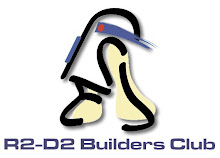But a problem acured. One of the Zip-Tied bundles came out of its plastic tube. I guess the Gorilla Glue isn't going to work very well in this case.
 So I decided to try Heat-Shrink tubing. This stuff is very useful for covering exposed wiring and electronic component links. All you do is get a piece only slightly larger in diameter than what you're covering, fit it over the part, and then use a heat gun/hair dryer (either one works) to heat up the tubing and then it will tightly shrink around whatever is inside it. And it worked like a charm.
So I decided to try Heat-Shrink tubing. This stuff is very useful for covering exposed wiring and electronic component links. All you do is get a piece only slightly larger in diameter than what you're covering, fit it over the part, and then use a heat gun/hair dryer (either one works) to heat up the tubing and then it will tightly shrink around whatever is inside it. And it worked like a charm. The Zip-Ties are for good measure.
The Zip-Ties are for good measure.
Unfortunitly, I have run out of Fiber Optic cable. I just ordered more today, but it'll take a few days before it arrives. I get my fiber from http://www.fiberopticproducts.com/.
These pictures are a long time coming. They are diagrams of how the fibers will be arranged in the Logic Display bezels. Please note that these diagrams came from the R2-D2 Builders Club and where made by one of its members. These diagrams are NOT how the Real R2-D2's Logic Display lights work. ILM is keeping that a trade secret.
Unfortunitly, I have run out of Fiber Optic cable. I just ordered more today, but it'll take a few days before it arrives. I get my fiber from http://www.fiberopticproducts.com/.
These pictures are a long time coming. They are diagrams of how the fibers will be arranged in the Logic Display bezels. Please note that these diagrams came from the R2-D2 Builders Club and where made by one of its members. These diagrams are NOT how the Real R2-D2's Logic Display lights work. ILM is keeping that a trade secret.
